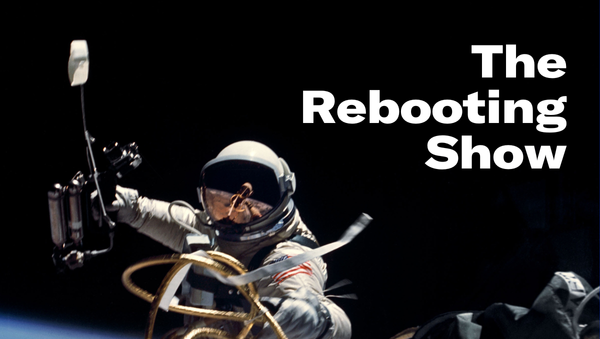What CEOs often get wrong
Crises expose the limitations of leaders
I want to welcome new subscribers this week from Paul Wright’s journalism class at Indiana University. I’m glad you’re interested in journalism. Despite all the moaning and the real business challenges, journalism remains a great career choice if you’re curious about how the world works. On that note, I would very much appreciate it if you share this newsletter with colleagues (or students) who would find it valuable. As always, I love getting feedback, so feel free to email me at bmorrissey@gmail.com. Finally, I’m looking to line up some sponsors for the fall. Check out the sales kit and get in touch.
The Covid books have arrived. Enough time has passed for a fuller understanding of the missteps that took place, allowing this pandemic to continue raging 18 months later. I’ve written about the systemic failures that were at the heart of the ineptitude shown by those in charge. I’m also intrigued by the leadership failures Covid exposed, particularly at the top of organizations.
One of the mysteries of Trump is his management style. One thing I’ve heard from those who have interacted with him, and that’s reinforced in books, is he’s a surprisingly good listener -- to a point. But once his mind is made up, he shuts out dissenting views and contrary information. Even worse, he tended to be unaware of the biggest risk to a president: people don’t give you the information you need. Health secretary Alex Azar was giving a different picture of the impending coronavirus disaster vs what he was saying to Trump. When a top CDC official gave an honest assessment in late February, warning Americans of an “overwhelming situation” that would include school closings, social distancing, loss of income and child care. That’s a bad culture.
For many years, there would be a regular drumbeat that politicians should be like business leaders. If only a CEO was president, the thinking went, we wouldn’t have this national debt and gridlock would disappear. Of course running a company isn’t the same as running a government. But I think it also was a severe overestimation of the impact most CEOs actually have.
Being a CEO is difficult. There are many pressures that others don’t see. Being the head of organizations now is impossibly complicated. Time and again, we’ve seen crises, both internal and external, expose the limitations of CEOs and leaders. You’d think we’d learn that extremely few CEOs are indispensable. Apple and Microsoft have done just fine without Jobs and Gates. I suspect Amazon will turn out fine under Andy Jassey.
There are plenty of LinkedIn posts from entrepreneurs about what makes a great CEO. Vision is usually at the top of the list. That’s true, but in the day to day, the job is often more about keeping the lights on by making sure there’s money in the bank. And in truth, there are many ways to lead. Here’s the habits I’ve observed that serve leaders well with the rest of the organization.
Walk the shop floor. One of my favorite CEO stories is how Paul O’Neill turned around Alcoa by focusing on worker safety. O’Neill believed in the need to “walk the floor,” in order to understand what was truly going on in operations. (Jeff Bezos would call into Amazon customer service.) Being a CEO can be lonely, and the biggest risk is an unseen divide materializing between what the CEO believes is happening and what is actually happening. What’s more, walking the floor enables a leader to be relatable, increasing the chances of someone two or three levels down telling the CEO they’re wrong.
Know the details. Vision and strategy are necessary but insufficient. My experience in the media business could be unique, but I’ve found vision completely overrated and execution underrated. There aren’t a ton of secrets to success in the media business. The successful companies have out-executed the unsuccessful at every turn. The way you execute well is being flawless -- or close to it -- in the details. The media business is thousands of small details. CEOs need to know enough to be dangerous. Doing a podcast for many years with media CEOs, I found that many had enough material for maybe 15 minutes, not a half hour of details. I used to think this was trying to protect a competitive advantage. I came to conclusion they just didn’t get into the weeds. Understanding the details allows a CEO to be more effective -- and more credible with those doing the execution.
Trust your people. When it comes to execution, trust the people you hired. This sounds simple, but many times people at the top say they trust people but their actions indicate otherwise. People see through this and, consciously or not, start to slow pedal. After all, if you micromanage every detail, soon those responsible for those details will simply wait for a decision to be made. Same goes for dipping into people’s groups to “move things along.” Just ends up causing more problems and slowing things down. The ironic part of this slowdown in action is micro-managing often comes out of CEO impatience for action. Get moving or get out of the way. In the long run, I’m sure this makes the CEO feel useful but it ultimately slows down the organization. As Morning Brew CEO Austin Rief put it, “Oftentimes, your job as CEO is to just get out of people’s way.”
Set clear strategic priorities and stick to them. I’ve never seen an internal company survey where “communication” wasn’t ranked low. Part of that is people hear what they want, read what they want. That said, I’ve seen many instances where strategic priorities simply aren’t set or there are so many as to not be priorities at all. If you need to miniaturize the font to fit a laundry list onto the “2022 Priorities” slide, you’re not actually prioritizing. The flip side is to embed these priorities in everything the organization does -- and to not get distracted by the latest grand idea that popped up from an old buddy you ran into on the train or something you noticed a competitor doing.
Be realistic in goals. The vision thing many CEOs cling to can sometimes be closer to trying to manifest a reality. I suspect they’ve read too many airport bookstore leadership books. Optimism is a prerequisite, but not if it’s not matched with the proper allocation of resources to achieve the objective. Setting an unrealistic “stretch goal” ends up backfiring in people feeling as though they always came up short when, in fact, the one setting the unrealistic goal and not allocating sufficient resources was the one who came up short. Again, this just dents credibility with the organization because people just assume the Big Boss is making shit up.
That’s it for this week. I hope everyone is able to get to a beach or somewhere relaxing before the fall starts. Thanks again for reading.




